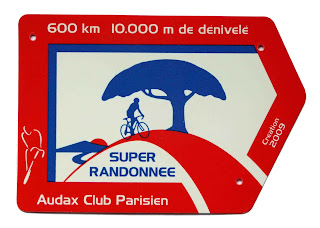This is a compendium of routes I've developed on Maui and Hawai'i, the Big Island. They are oriented to some of the places where people might stay on vacation or live. Hawai'i is arguably the most bike-friendly island to ride, as it is roomier and has more miles of good roadway for cyclists, including the luxurious new Saddle Road (climbing over the saddle between Mauna Kea and Mauna Loa), and the busier but wide-shouldered Queen Ka'ahumanu Highway on the Kona coast. Large parts of Maui are good as well.
Many of these routes are strenuous, either because of the climbing, the wind, or the heat in the lava fields. But scenic and rewarding.
Hawaii has many faces, which makes riding there so interesting!
Click on any route name to see the RideWithGPS route.
MAUI
202km - 11,800 ft. climbing - 3,051 ft. max.
Lihei start
This is a tough ride, with a succession of climbs in and out of bays on the Hana Highway, and possible showers on this, the windward side; rough pavement and some dirt on the south coast; and a climb over the shoulder of Haleakala. Can also be a hot ride in that section with limited services, but scenic and quiet! Clockwise or counter-clockwise options.
Quiet single-lane road through lava flows on Maui south coast.
HAWAI'I (The Big Island)
100km - 2,800 ft. climbing - 997ft. max
Kona start
A jaunt down the coastal Queen Ka'ahumanu Highway, and climb up to Waikaloa Village, a verdant town surrounded by the dry grasses and volcano pumice of the western slope of Mauna Kea.
Grasses poke out of lava fields on the Kona Coast.
200km - 7,100 ft. climbing - 3,580 ft. max
Kona start
Up the Queen Ka'ahumanu Highway, a stiff climb past Waikaloa Village to Waimea, and the scenic climb over the Kohala Highway to windward greenery at Hawi.
The edge of moisture on the Kohala Highway.
201km - 7,800 ft. climbing - 3,580 ft. max
Waimea start
Much like the Kona Hawi Hop, but based in Waimea, starting with the climb over Kohala Highway, and finishing with the stiff climb from the coast back to Waimea.
Climbing the Kohala Highway with sunrise over Mauna Loa.
120km - 7,500 ft. climbing - 9,117 ft. max
Waimea start
Some scenic, quiet climbing over what used to be part of the Saddle Road, to the new Saddle Road proper, and a stiff, extended climb up the Mauna Kea Road to the visitors center. Bring adequate gearing. Weather can be changeable. Typically climb through the cloud deck to the visitor center.
Looking across the cloud deck, from Mauna Kea to Mauna Loa.
101km - 5,400 ft. climbing - 6,577 ft. max
Waimea start
Same as Mauna Kea Mosey, but only to the start of the Meana Kea Road.
The rare silversword plant, outside the Mauna Kea visitors center.
100km - 5,880 ft. climbing - 3,580 ft. max
Waimea start
The Kohala Highway to the windward coast and down to scenic Pololu Lookout. Stiff climb back over Kohala Highway, which is on the division between windward (wet) and leeward (dry) conditions.
101km - 3,900 ft. climbing - 620 ft. max
Hawi start
A visit to Pololu Lookout and down the dry, fairly quiet northwest coast to one of the resorts and back.
If you were staying at one of these resorts, the trip to Pololu Lookout and back would make a natural 100k.
A resort on the Kona Coast.
♦ ♦ ♦
Thoughts for Future Routes
Maui - I have thought of a "leeward side" 200k (meaning largely dry), which would take in the coast near Lihei, and West Maui at the north end of the route. Note that there can be strong winds in the "saddle" between West Maui and the other part of the island. A 100k to the top of Haleakala and back is also a natural route.
South Point on the Big Island - next stop, Antarctica.
Hawai'i - There are some possible 200km routes between Waimea and Hilo, either out-and-back, e.g., along the quiet, twisting Old Mamalahoa Highway, or taking the Saddle Road. But the Saddle Road is a prolonged, stiff climb out of Hilo (this section not yet "modernized" with shoulders), and this route has a lot of climbing. Also 100k routes from Waimea or Hilo to Waipi'o Lookout (companion to Pololu Lookout) on the coast. Some routes either from Volcano to South Point (southernmost spot in non-territorial US) or other areas of the south coast could also be good.
-jle



















































